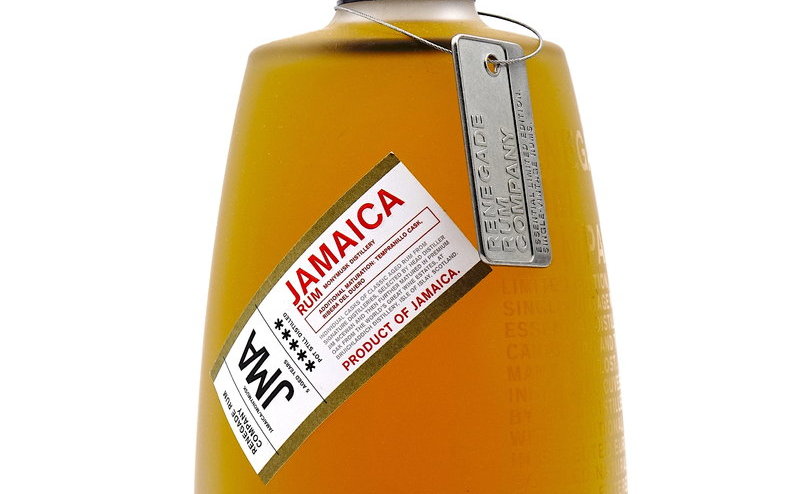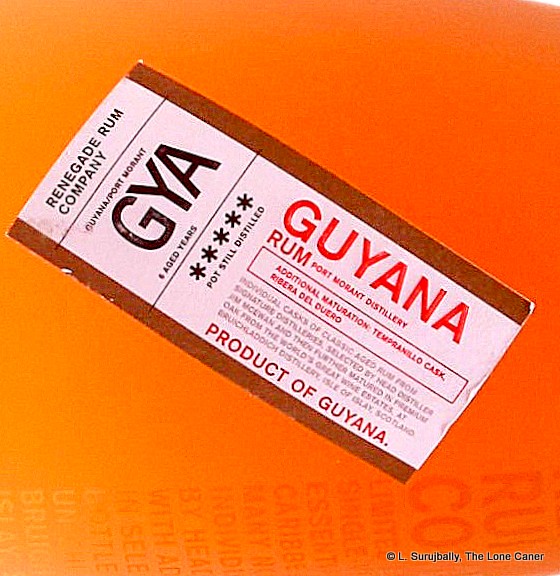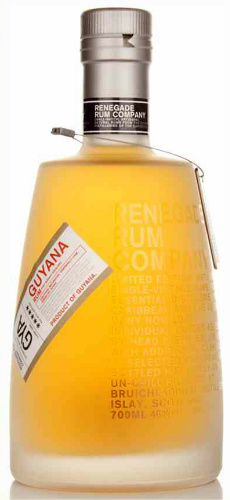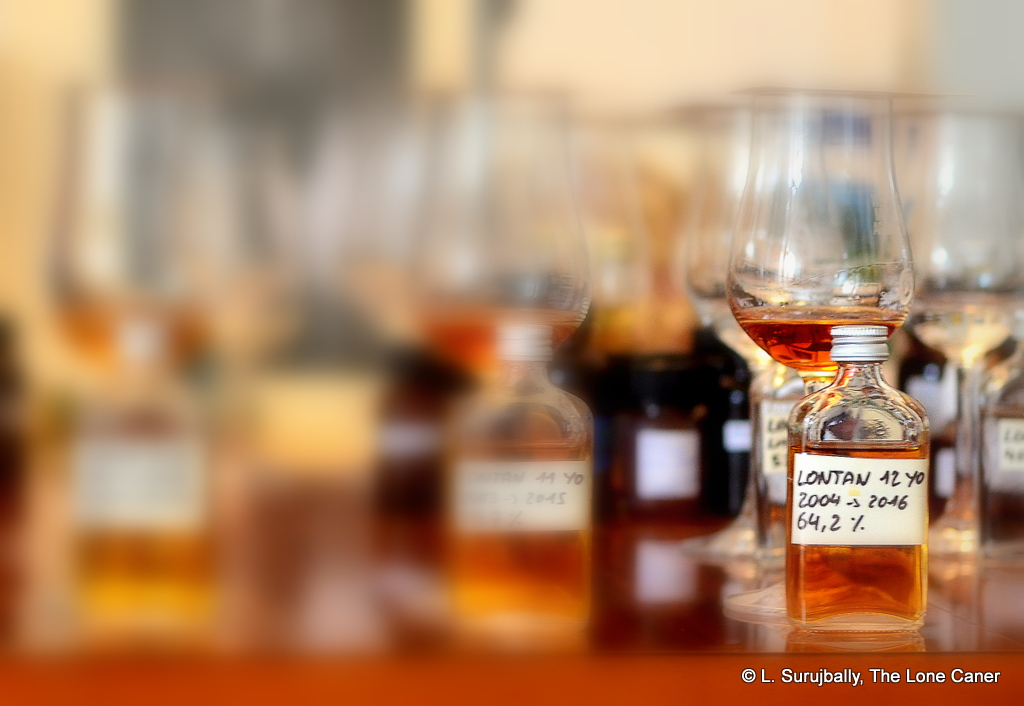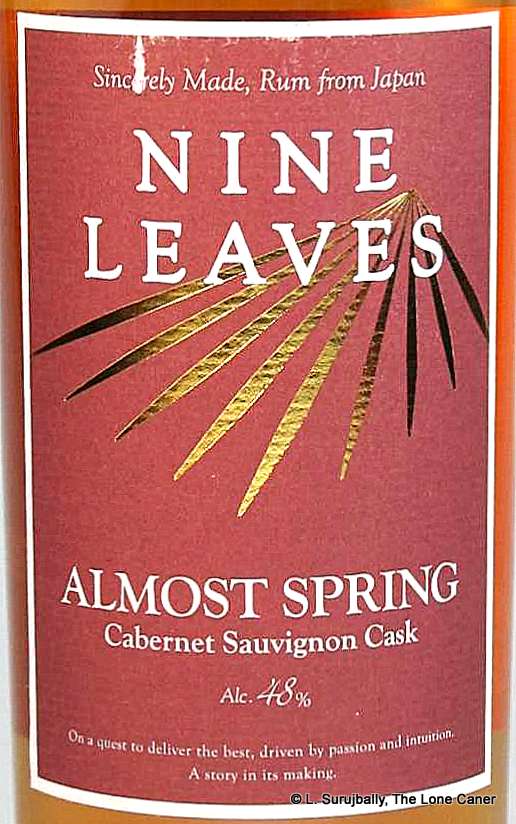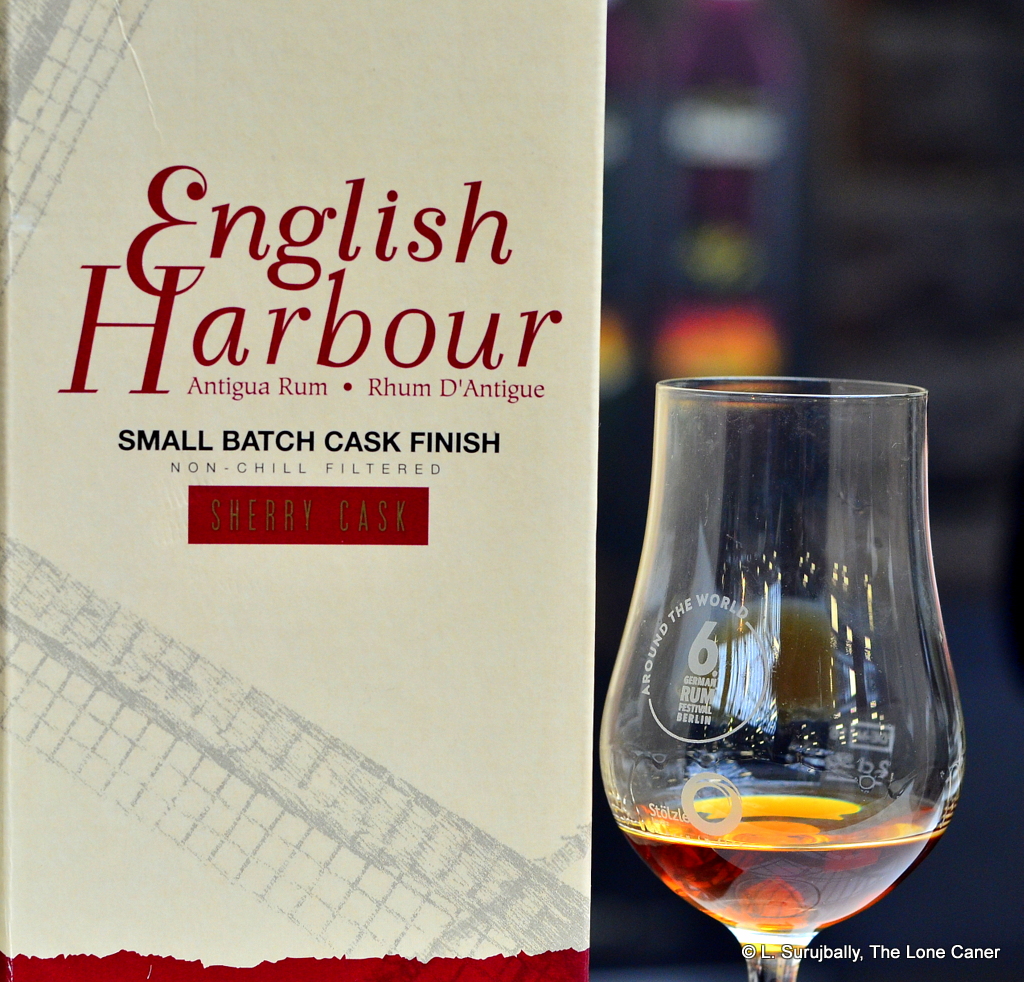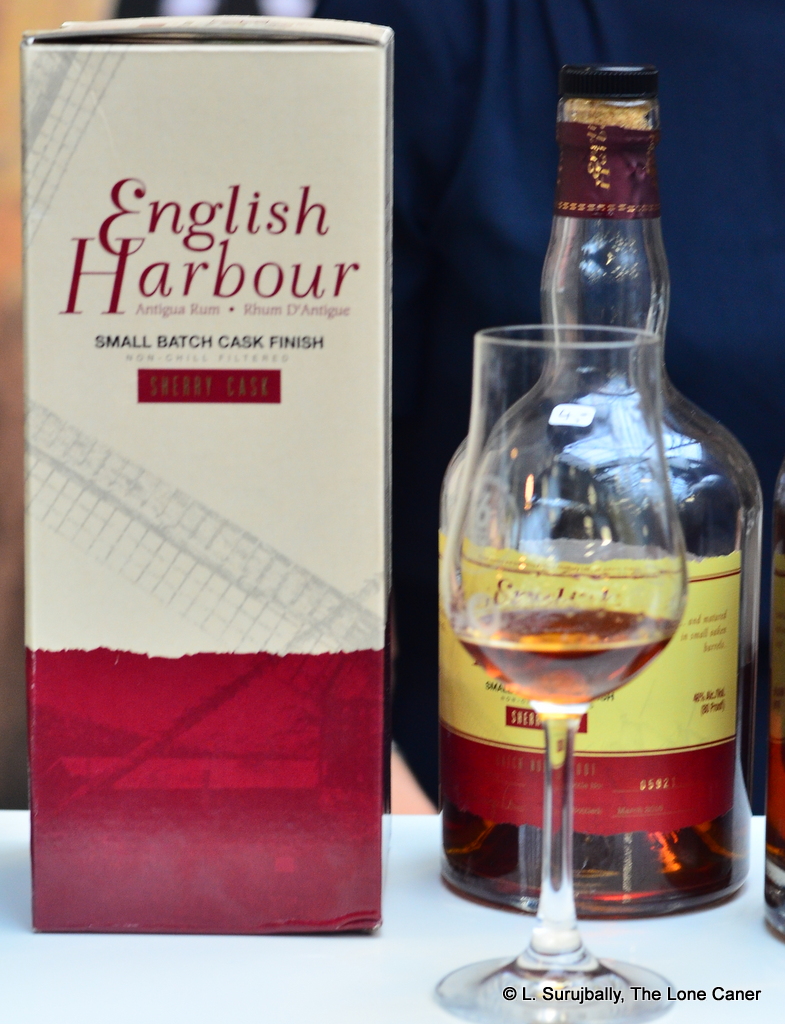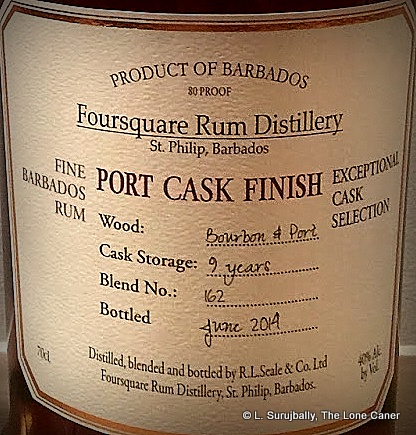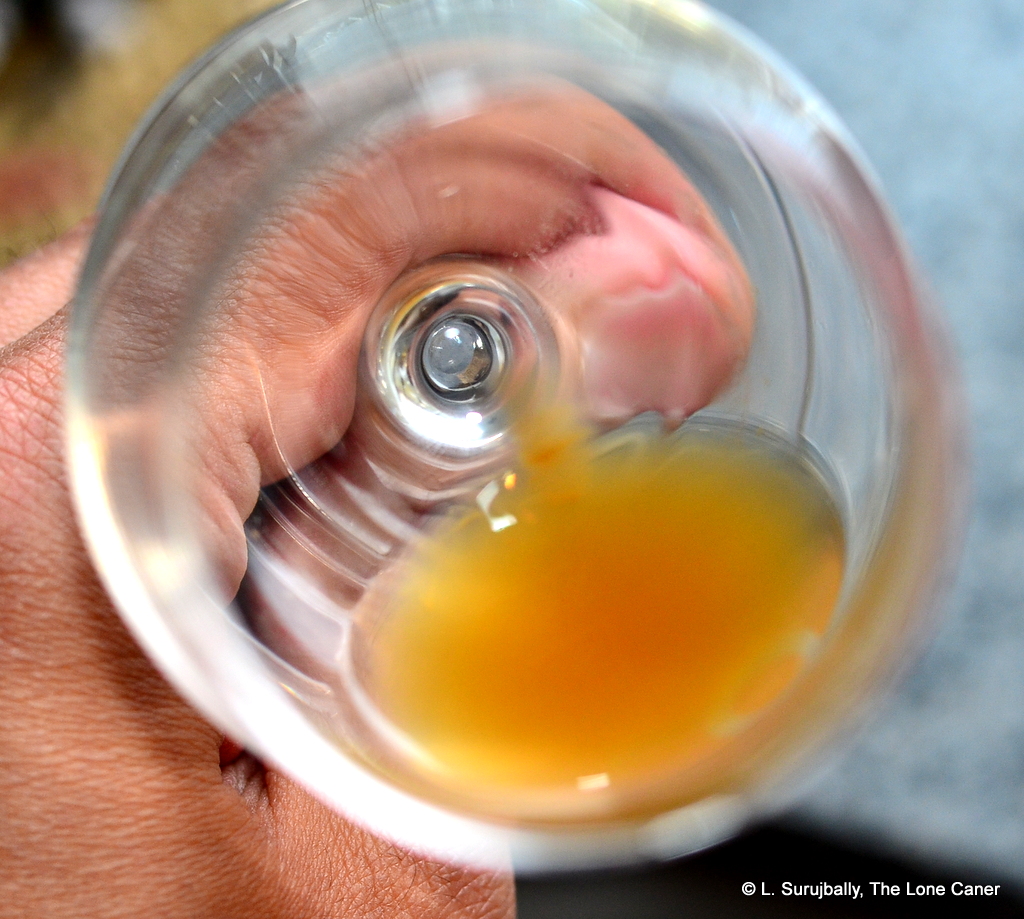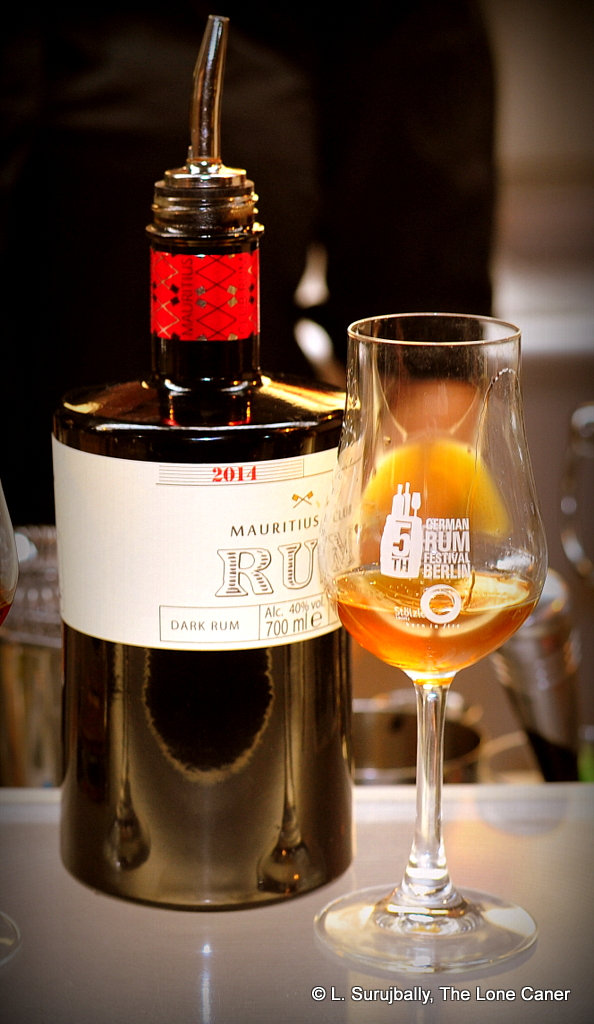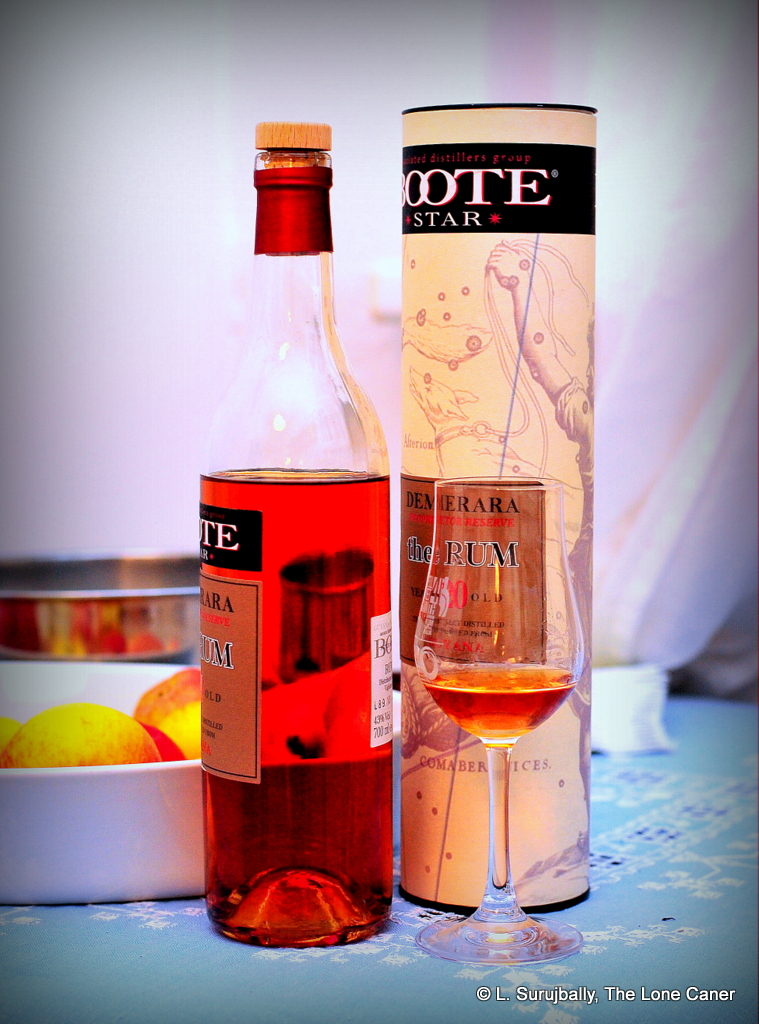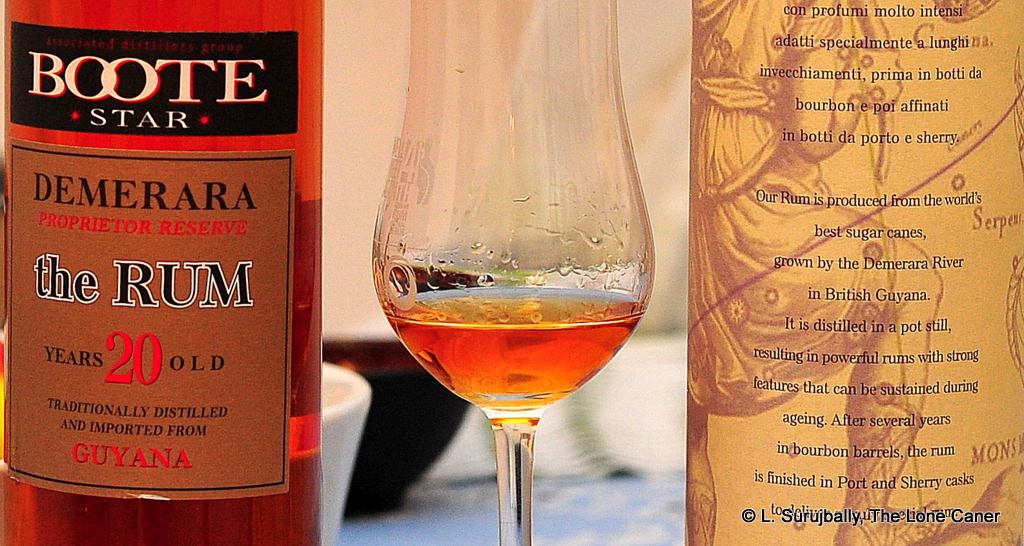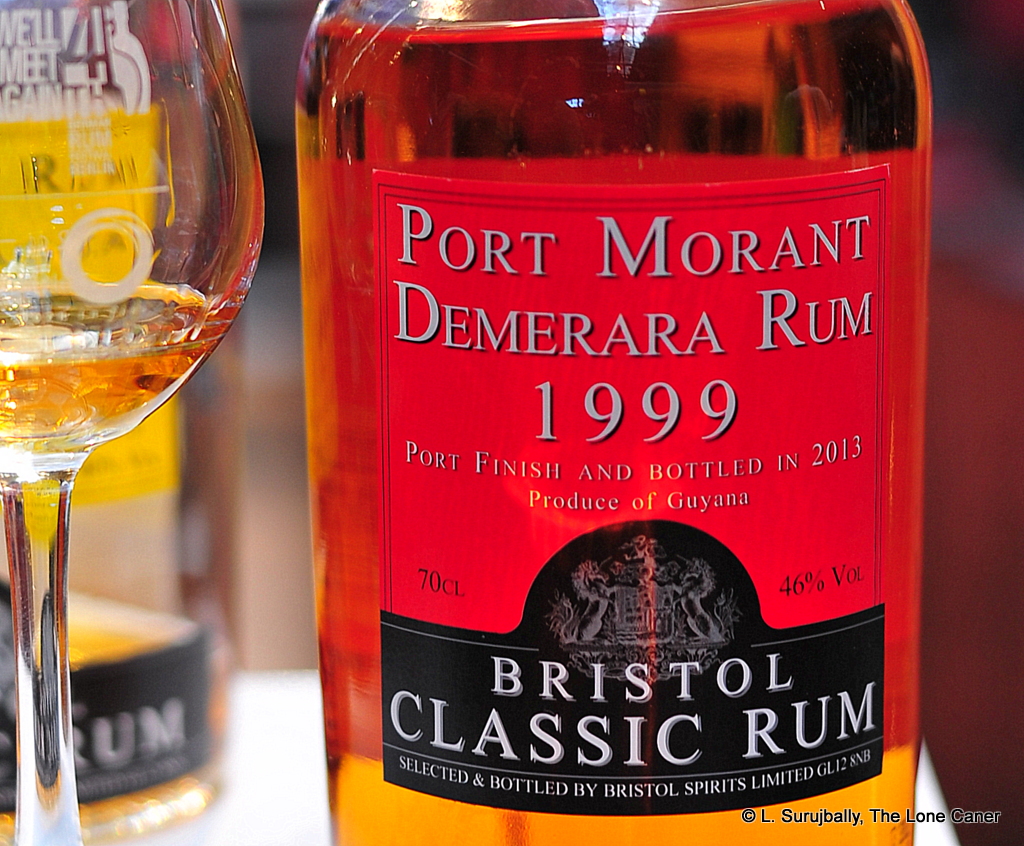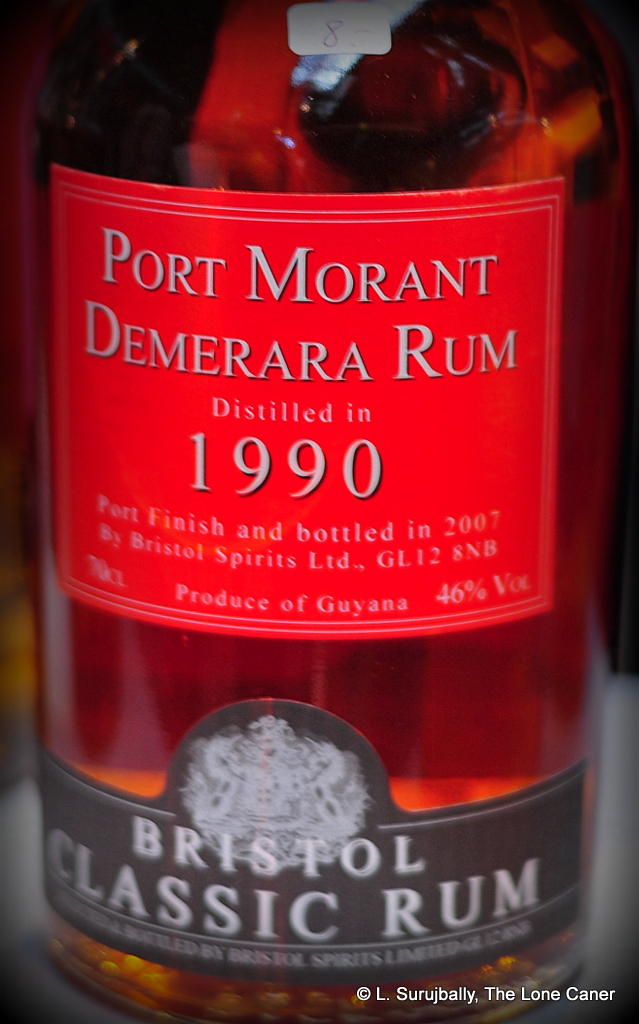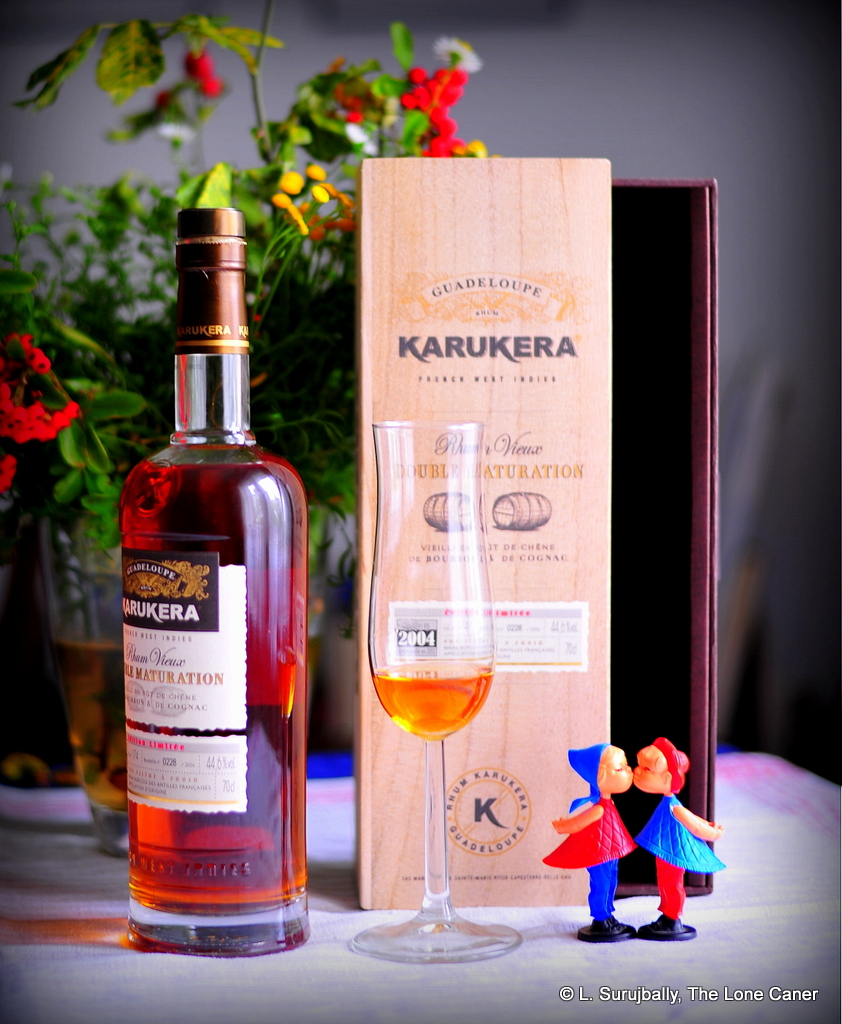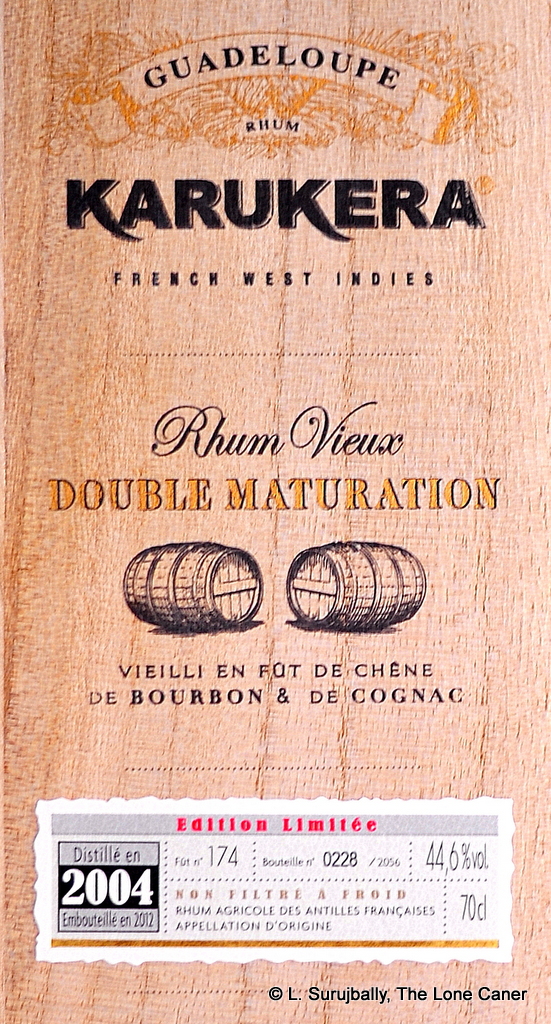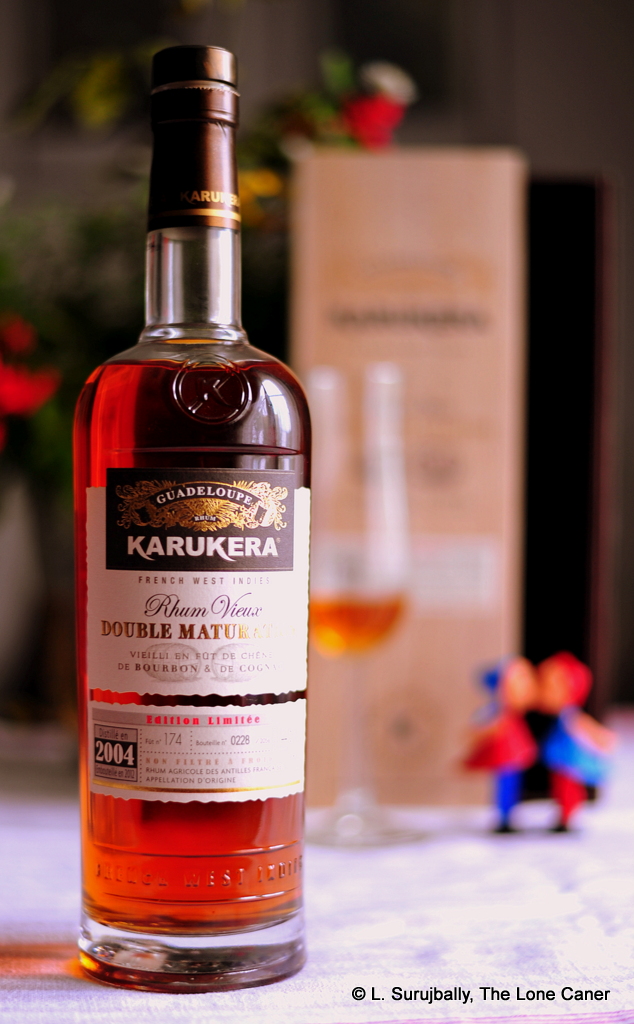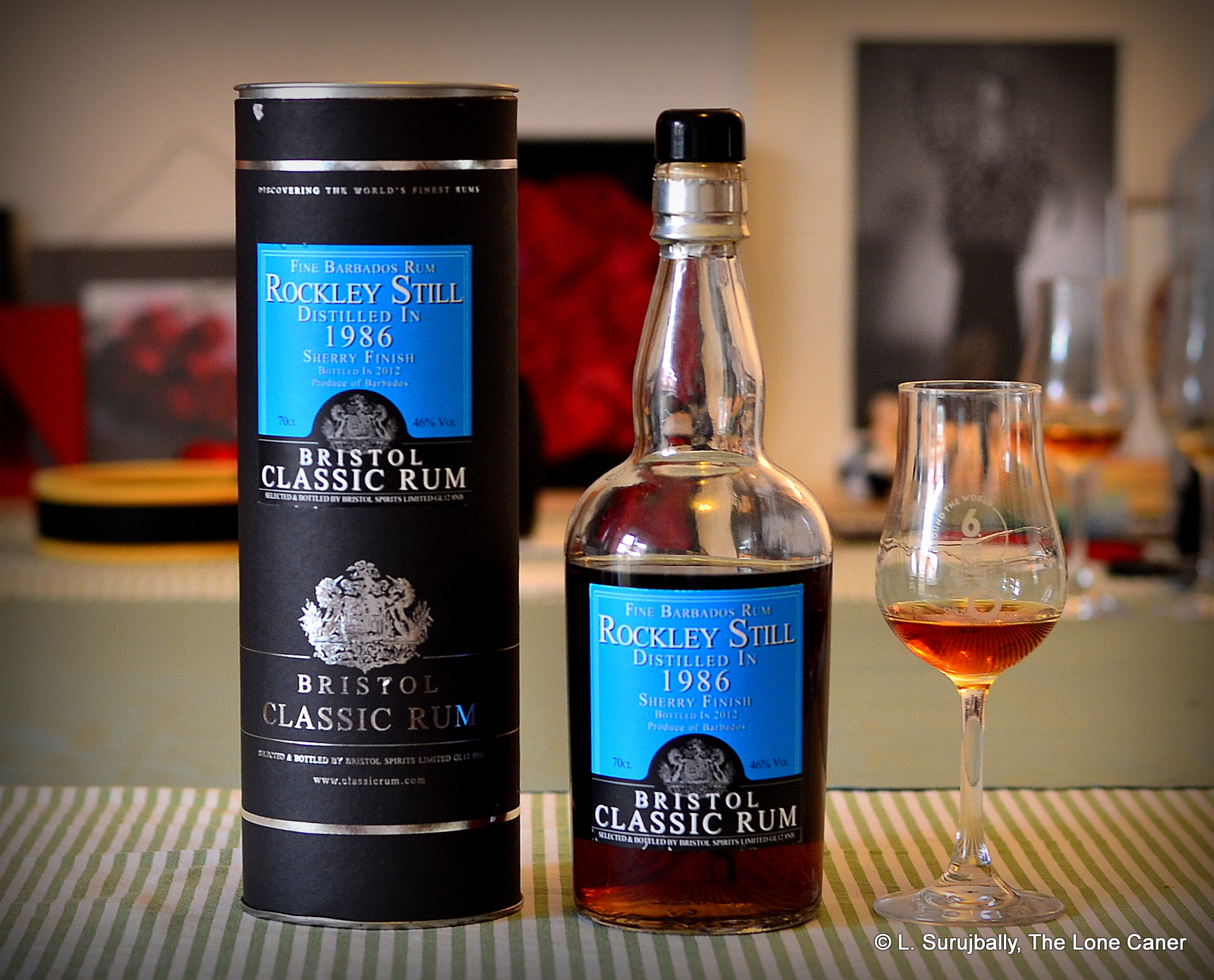
My friend Henrik from Denmark told me once that he really dislikes the rums of WIRD. “There’s just something off about them,” he grumbled when we were discussing the output from Little England, the development of the Foursquare Exceptionals, and the Velier collaborations. On the other hand, another rum-kumpel from Germany, Marco Freyr, has no problems with them at all, and remarked that he could absolutely pinpoint any Rockley Still rum just by sniffing the glass (I have since come the the conclusion that he’s absolutely right). Coming to this Bristol Spirits rum after a long session of Bajan bruisers made by the Compagnie, Cadenhead and Foursquare themselves, I can sort of see both points of view, but come down more on the positive side, because I like the variety of tones and tastes which indie WIRD rums provide. And this one? I liked it quite a bit.
We hear so much about the rums of Mount Gay, St. Nicholas Abbey and Foursquare, that rums made by/from WIRD often get short shrift and scant mention. It’s not even seen as a true distillery of the sort that makes its own name and marks its own territory (like Foursquare, Hampden, Worthy Park or DDL do, for example). But WIRD does exist, even if the majority of its rums come to us by way of the European independents (most of its output is sold as either bulk stock to brokers, goes into the Cockspur brand, or to make the coconut-rum-liqueur Malibu which for some obscure reason, Grandma Caner simply can’t get enough of).
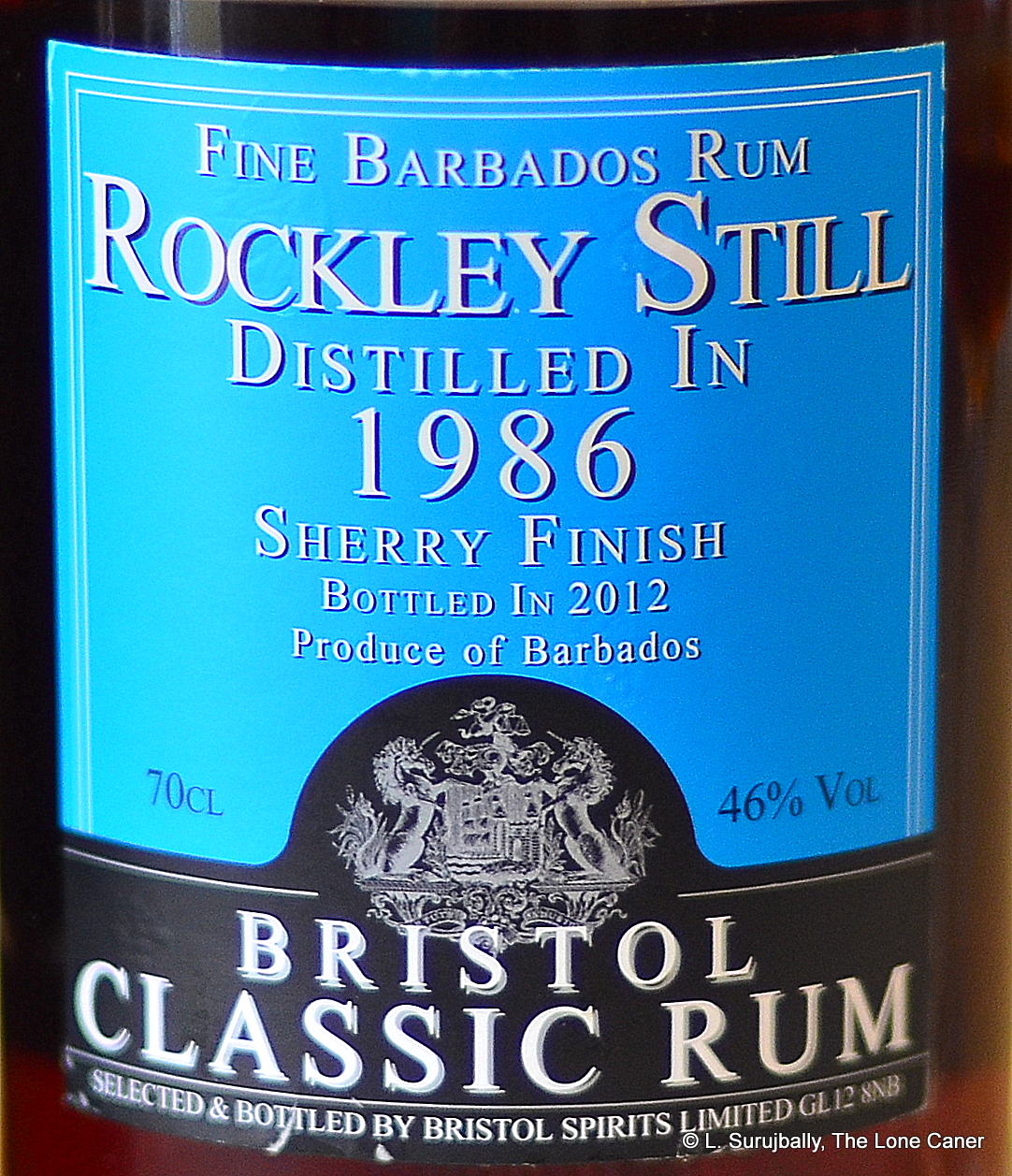 The brief technical blah is as follows: bottled by Bristol Spirits out of the UK from distillate left to age in Scotland for 26 years; a pot still product (I refer you to Nikos Arvanitis’s excellent little essay on the Rockley still if you want to do more research), distilled in 1986 and bottled in 2012, finished in sherry casks for an indeterminate period. The strength remains at the Bristol Spirits standard 46% ABV, which makes it very approachable to the mainstream who want to explore further into how rums from Barbados can differ from each other.
The brief technical blah is as follows: bottled by Bristol Spirits out of the UK from distillate left to age in Scotland for 26 years; a pot still product (I refer you to Nikos Arvanitis’s excellent little essay on the Rockley still if you want to do more research), distilled in 1986 and bottled in 2012, finished in sherry casks for an indeterminate period. The strength remains at the Bristol Spirits standard 46% ABV, which makes it very approachable to the mainstream who want to explore further into how rums from Barbados can differ from each other.
And differ it does. No smooth, well-constructed melange of pot and column still product here, redolent of spices and soft fruits. Oh no. For openers, this rum’s nose was meaty: like licking a salty maggi cube dropped into a pot of chicken stock liberally dosed with sweet soy sauce. All of this develops over time (fortunately, because I had soup for lunch and didn’t want any in my glass as well) into waxy pungency leavened with a sort of sweet rich fruitiness (cherries, ripe peaches, apples) which then further combined with a forceful sherry/madeira finish that at times verged on being overdone….even medicinal. The nose was so at odds with everything I had alongside it, that one could be forgiven for thinking this was not a Bajan rum at all…it nosed that different.
Still, it was much better to taste than to smell. It was warm and reasonably smooth, though with a bite here or there to remind you it wasn’t fully tamed; its tastes were of caramel, dollops of thick dark honey on fresh toasted dark bread, camomile, thyme and cough drops. Iodine and medicinals are thankfully held way back (a pencilled-in line, not a brightly coloured oil by Frazetta, you might say). Also burnt sugar, stewed apples and some ripe cherries and the tart tastiness of soursop, ginnip and sour cream rounded things off, before lapsing into a relatively short, fruity, and honey-like finish that breathed easy fumes and then hurriedly exited the scene.
Overall, it was a rich rum, full bodied, a little oaky, quite fruity after opening up, and that sherry influence — perceptible but in no way overwhelming — was enjoyable. In fact, the overall integration and balance of this thing is really quite good, and it provides a pleasing counterpoint to more popular and better known rums from the island, which by itself makes it worth a try. One does not have to be a deep-dive Bajan rum aficionado, parsing the minutest details of different vintages, to appreciate it for what it is, a well made Bajan rum that dares to go off on a tangent.
There’s a reason I want WIRD rums to continue to make it to the public glassware, even if it’s just second hand, via the independents (now that Maison Ferrand has taken over, it’s only older rums from European brokers they’ll get, I’m thinking). They’re different, very different, existing in some kind of joyous parallel universe where mothballs, fruits and cloves mix it up in a dusty spice cupboard and the result is peculiarly drinkable. They are, in their own way and possibly because of their relative obscurity, fascinatingly off-base. I haven’t met many so far, but those I’ve tried I’ve liked, and sure hope more will turn up in my glass in the years to come.
(#562)(86/100)
Other notes
- The SMWS has issued a few WIRD rums, the R.3 series…I’ve tried R 3.4 and R 3.5. The Samaroli 1986 20 YO Barbados Rum review also has some background information on the distillery and its stills, and I have one last 1986 vintage from Rensburger to write about.
- The Fat Rum Pirate’s 2016 review is here, and reddit had a shortform review just a couple of months ago.
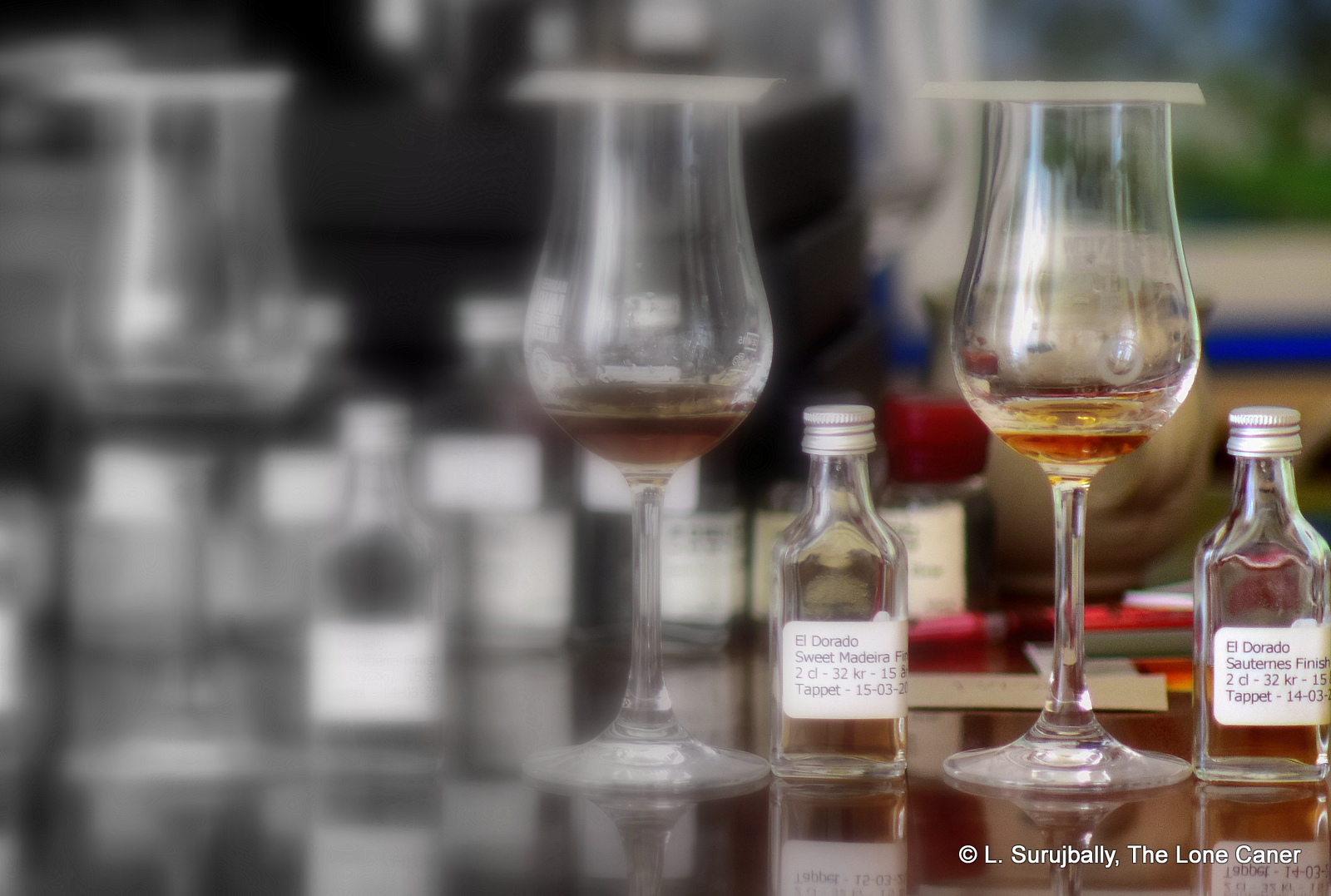
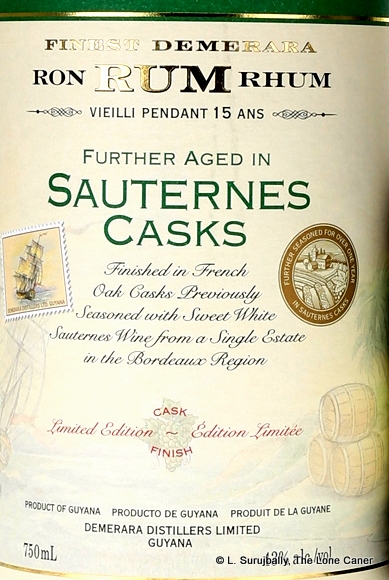 Nose – In a subtle way this is different from the others. It opens with aromatic tobacco, white almond-stuffed chocolate and nail polish before remembering what it’s supposed to be and retreating to the standard profile of salty caramel, molasses, vanilla, cherries, raisins, lemon peel and oak, quite a bit of oak, all rather sere.
Nose – In a subtle way this is different from the others. It opens with aromatic tobacco, white almond-stuffed chocolate and nail polish before remembering what it’s supposed to be and retreating to the standard profile of salty caramel, molasses, vanilla, cherries, raisins, lemon peel and oak, quite a bit of oak, all rather sere.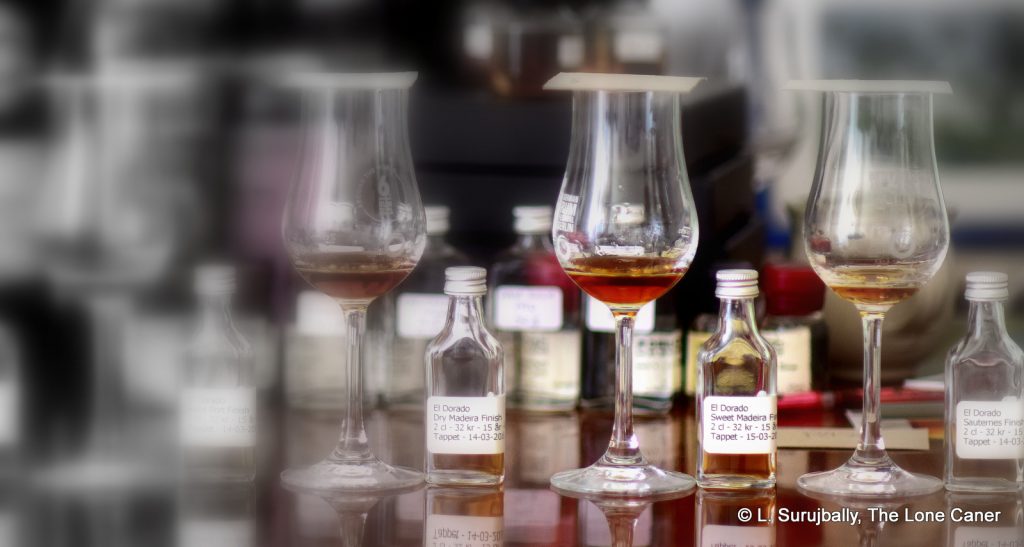
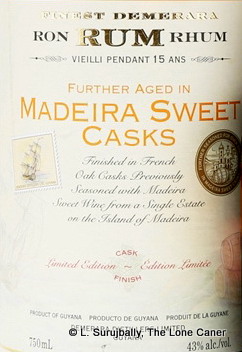 Nose – Leaving aside a slight sweetish note (which I suppose is to be expected, though still not entirely welcome), it noses relatively darker and richer and fruitier than just about all the others except the “Dry”…within the limits of its strength and mild adulteration. Peaches, raisins, cinnamon, cloves, caramel, peanut butter, cherries in syrup and candied oranges, even a little bitter chocolate. It’s all rather delicate, but quite pleasant.
Nose – Leaving aside a slight sweetish note (which I suppose is to be expected, though still not entirely welcome), it noses relatively darker and richer and fruitier than just about all the others except the “Dry”…within the limits of its strength and mild adulteration. Peaches, raisins, cinnamon, cloves, caramel, peanut butter, cherries in syrup and candied oranges, even a little bitter chocolate. It’s all rather delicate, but quite pleasant.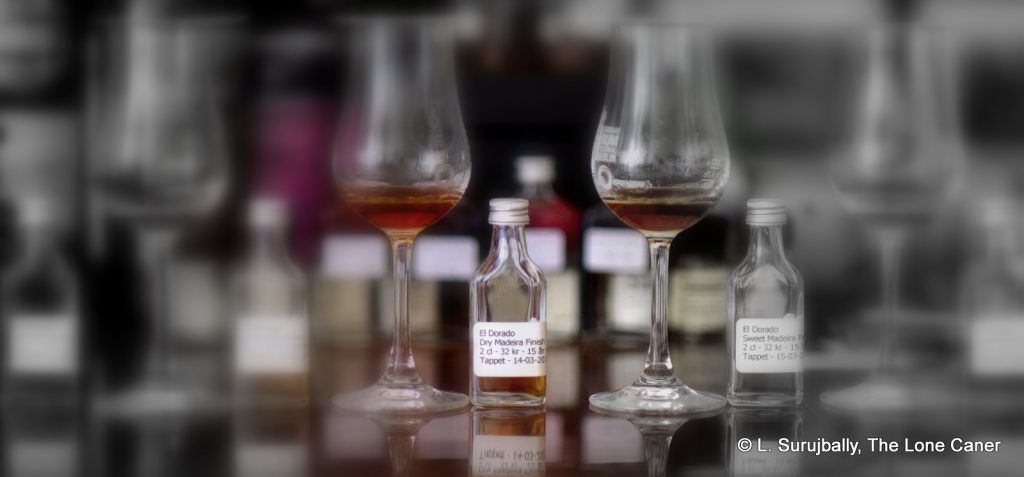
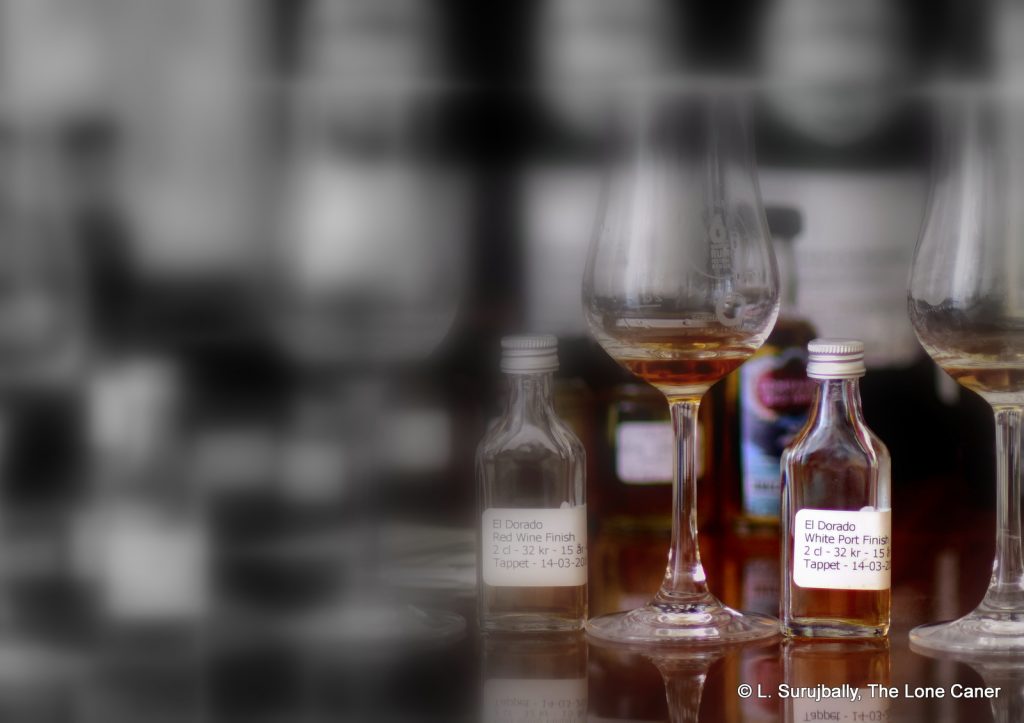
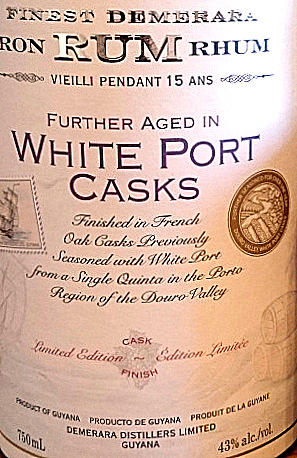 Nose – At first there didn’t seem to be much of anything there, it was so mild as to be lightly flavoured alcohol. But after some minutes it got into gear and revved up some, with a solid core of light brown sugar, molasses, salt caramel, some sweet soya. Not much deep fruitiness here, just light grapefruit, bananas and nuttiness, and sweet white chocolate.
Nose – At first there didn’t seem to be much of anything there, it was so mild as to be lightly flavoured alcohol. But after some minutes it got into gear and revved up some, with a solid core of light brown sugar, molasses, salt caramel, some sweet soya. Not much deep fruitiness here, just light grapefruit, bananas and nuttiness, and sweet white chocolate.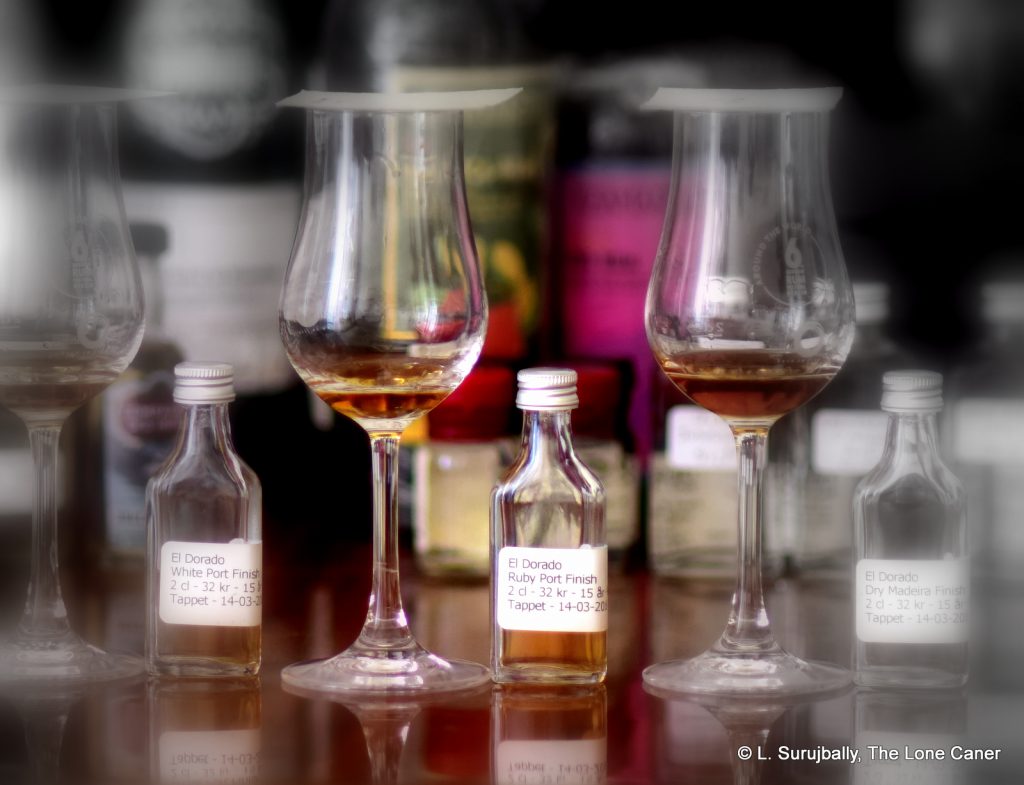
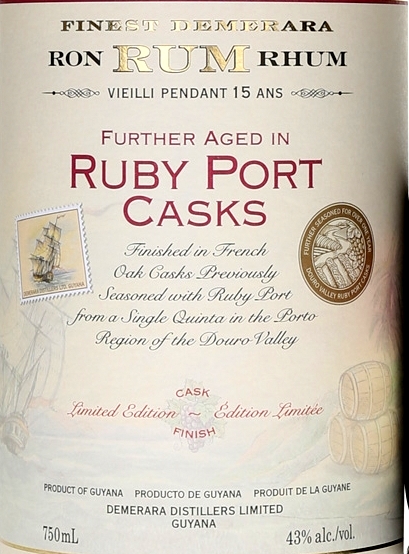 Nose – This has a light, sweet, almost delicate series of smells. There are acetones, flowers and some faint medicinal, varnish and glue aromas floating around (I liked those – they added something different), and initially the rum noses as surprisingly dry (another point I enjoyed). These then morph gradually into a more fruity melange – tinned cherries in syrup, ripe pears, pineapples, watermelons – while remaining quite crisp. It also hinted at salted caramel, crunchy peanut butter, breakfast spices and a little brine, and the balance among all these seemingly competing elements is handled really well.
Nose – This has a light, sweet, almost delicate series of smells. There are acetones, flowers and some faint medicinal, varnish and glue aromas floating around (I liked those – they added something different), and initially the rum noses as surprisingly dry (another point I enjoyed). These then morph gradually into a more fruity melange – tinned cherries in syrup, ripe pears, pineapples, watermelons – while remaining quite crisp. It also hinted at salted caramel, crunchy peanut butter, breakfast spices and a little brine, and the balance among all these seemingly competing elements is handled really well.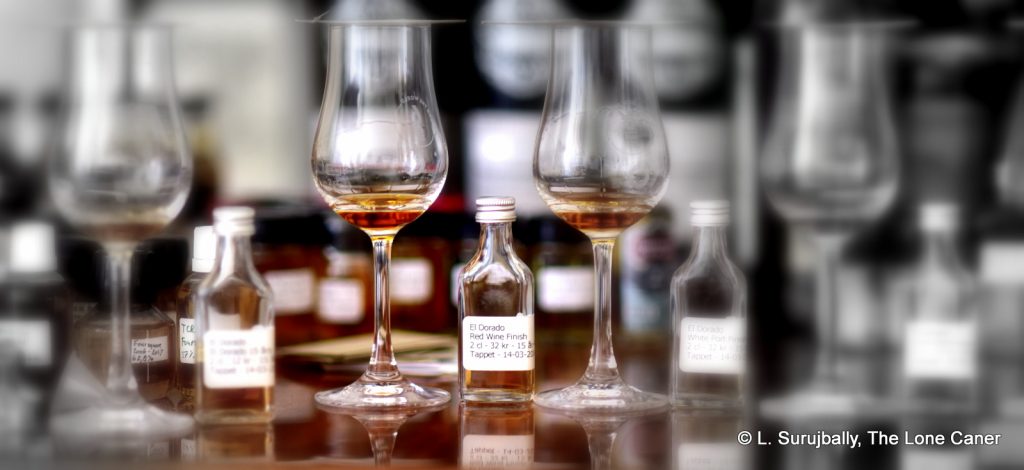
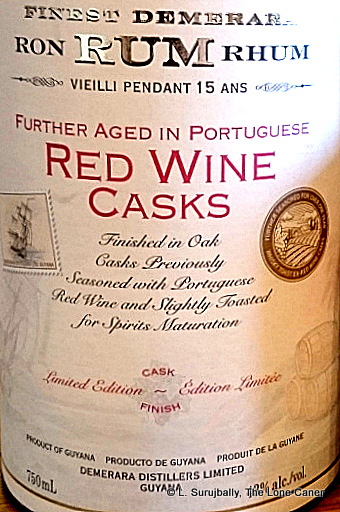 Nose – Somewhat dry and redolent of sawdust, accompanied by delicate flowers an acetones. Quite solid and lightly sweet, and deserves to be left to stand for a while, because after some minutes the molasses, caramel and light licorice notes characteristic of the line begin to make themselves felt, and are then in their turn dethroned by a deep fruitiness of ripe cherries, blackcurrants, plums, raisins and black grapes almost ready to spoil. In the background there’s some leather and citrus, neither strong enough to make any kind of serious impression.
Nose – Somewhat dry and redolent of sawdust, accompanied by delicate flowers an acetones. Quite solid and lightly sweet, and deserves to be left to stand for a while, because after some minutes the molasses, caramel and light licorice notes characteristic of the line begin to make themselves felt, and are then in their turn dethroned by a deep fruitiness of ripe cherries, blackcurrants, plums, raisins and black grapes almost ready to spoil. In the background there’s some leather and citrus, neither strong enough to make any kind of serious impression.